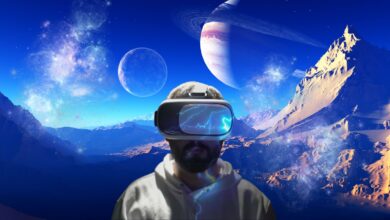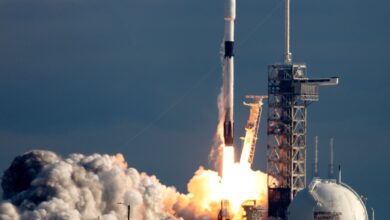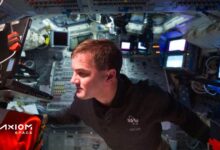The attempt of humankind to make space tourism a reality became a success in 2021. However, the success may not be suitable for Mother Nature and the folks back home. A new study found out that the soot emitted via the space tourism spacecraft could negatively impact the ozone layer and Earth’s atmosphere and cause significant changes to the global climate in the forthcoming decades.
According to researchers, it’s assumed that the rapidly progressing suborbital space tourism industry will significantly establish over the next decade. Also, they evaluated the adverse climatic impact of carbon dioxide emissions and soot from over 1000 suborbital space flights every year.
One of the chief researchers of the Aerospace Corp. in El Segundo, Martin Ross, says that “spacecraft is the only undeviating source of artificial compounds above the seal level (about 14 miles), and so it becomes crucial to understand how their emission affects the ozone layer and the overall climate.
Space Tourism: about the layer of soot
As per studies and research, soot particles emitted by the advanced commercial spacecraft of the space tourism industry would gather and accumulate at an altitude of 25 miles. This emission accumulation would occur three times above the altitude of regular aircraft traffic.
In the case of soot emitted from coal power plants or jets, the particles get administered lower in the atmospheric level and drop down to Earth within a few weeks. However, the soot particles emitted by space flights stay in the Earth’s atmosphere for a year or more. These particles efficiently soak up the sunlight, which otherwise would have reached the Earth’s surface.
According to a researcher of the NCAR or National Center for Atmospheric Research in Boulder – Michael Mills, the soot emission by rockets will result in a global climatic change.
In a statement, Mill said, “The climatic system’s response to the relatively small amount of black carbon is shocking.” “As per our evaluation result, the climate system is relatively sensitive to the various types of residue emitted by space flights.”
Researchers used a computerized model of the Earth’s atmosphere to discover more facts. They found that underneath the projected soot layer, Earth’s overall surface would become cool by 0.7 degrees Celsius (1.2 degrees Fahrenheit). However, they discovered that the surface of Antarctica would turn warm by 0.8 degrees celsius (1.5 degrees Fahrenheit).
Also, Earth’s equatorial regions would face a loss of about 1% of their ozone layer. The north and south poles would otherwise gain 10% of ozone. This global impact will result in a significant acceleration in the absorption rate of solar energy by the Earth’s atmosphere.
In simple words, the soot emitted from rockets would heat the atmospheric layer at a higher rate than the carbon dioxide emitted from these same rockets.
An old study from 2009 by Ross said that spacecraft emissions are specifically destructive to the ozone layer. These emissions are directly injected into the place where the ozone resides – the stratosphere.
Space Tourism: about black carbon
Ross says that “predictions by the researchers were hinged on the business objectives for suborbital space tourism in 2020.” “Currently, the worldwide spry of hydrocarbon-fueled orbital space flights are assumed to emit around one-tenth of the soot.”
“Evaluation of the climatic impact of orbital and suborbital space flights must consider the emissions of black carbon into the atmosphere. If not, they will neglect the most crucial part of the overall climate impact from space flights,” Ross said.
Space Tourism: competitiveness led rise to climatic change
Although the first mission of sending civilians into space became a success in 2021, the commercial competition to send civilians into space was pretty intense. Two renowned founders of space tourism companies – Sir Richard Branson of Virgin Group and Jeff Bezos of Amazon proved their capabilities with their success.
On July 20, 2021, Jeff’s autonomous Blue origin spacecraft launched into space, while Branson mounted 49 miles (80 km) up the sky to surpass the edge of space on July 11, 2021, in his spacecraft named Virgin Galactic VSS Unity. Bezos’s launch schedule was behind the schedule of Branson, but Bezos managed to reach higher altitudes (74 miles) than his fellow competitor.
The launch was the onset of space tourism offering for the wealthy group of space enthusiasts who wished to explore outer space truly. Not far behind the commercial race, in late 2021, SpaceX by Elon Musk made the offering of orbital space travel with its Crew Dragon capsule for four to five days.
With all this competitiveness in the commercial space tourism industry, the level of soot emissions from rockets must significantly increase over the coming years. If these companies don’t come up with an eco-friendly solution to cope with the issue of soot and rocket residue, ozone depletion will accelerate at a faster rate.
Space Tourism: environmental consequences
In an interview, Bezos boasted that the space flights made by Blue Origin are more eco-friendly than Branson’s VSS Unity. The spacecraft named Blue Engine 3 used liquid oxygen and liquid hydrogen propellants to launch Bezos, two guests, and his brother into space.
Meanwhile, the VSS Unity uses a hybrid propellant composed of nitrous oxide, hydroxyl-terminated polybutadiene (HTPB), and a robust carbon-based fuel. On the other hand, the Falcon series of reusable space flights by SpaceX uses liquid oxygen and liquid kerosene to propel the Crew Dragon.
The energy required by rockets to launch into space comes from burning these fuels. However, this combustion results in the emission of air pollutants and greenhouse gasses, which are harmful to the ozone layer.
The Blue Engine 3 propellant combustion also generates a large amount of water vapor, while burning of both the Falcon series and VSS Unity generates soot, carbon dioxide, and some quantity of water vapor. The VSS Unity also uses nitrogen-based oxidants, which produce nitrogen oxides, compounds responsible for air pollution and ozone depletion.
When examined, barely two-thirds of this propellant exhaust emission gets released into the mesosphere and the stratosphere, where it can remain for at least two years or more.
During the re-entrance to Earth, the protective heat shields of the returning rockets burn up. This combustion results in extremely high temperatures, which converts stable nitrogen levels in the atmosphere into reactive and harmful nitrogen oxides. These soot particles and gasses lead to several negative impacts on the ozone layer in the atmosphere.
Chemicals and nitrogen oxides produced after water vapor breakdown in the stratosphere convert the ozone into oxygen. It results in ozone layer depletion, which ultimately destroys the protective layer of the Earth against harmful UV radiations. Also, water vapor generates stratospheric clouds, enabling a surface for these chemical and gaseous reactions to occur rapidly.
Space Tourism: global climatic changes
It’s imperative to know that soot and carbon dioxide emissions trap heat within the atmosphere and contribute to global warming. However, cooling of the atmosphere also takes place when the emitted water vapor casts back approaching sunlight into space and produces clouds. Also, the stratosphere would be less heated as the ozone layer depletion would decrease the absorption rate of incoming sunlight.
Determining the overall impact of spacecraft launches on the atmosphere will need more comprehensive modeling to account for the persistence of these pollutants and complex processes in the upper atmospheric layer. Moreover, it’s equally crucial to properly understand how the space tourism industry will come up with its launch and environment-friendly tactics.
“We will offer about 400 space flights every year to the wealthy class of space enthusiasts,” says Virgin Galactic. However, SpaceX and Blue Origin have yet to develop their scheduling pattern. These launches can emit around 4-10 times more nitrogen oxides than the largest thermal power plant in the UK – Drax.
Final thoughts
To keep up with this rapidly progressing industry of space tourism and control carbon and soot emissions, international regulators need to work together with scientists to acquire a better understanding of the profound impacts of space tourism on Earth’s atmosphere.







